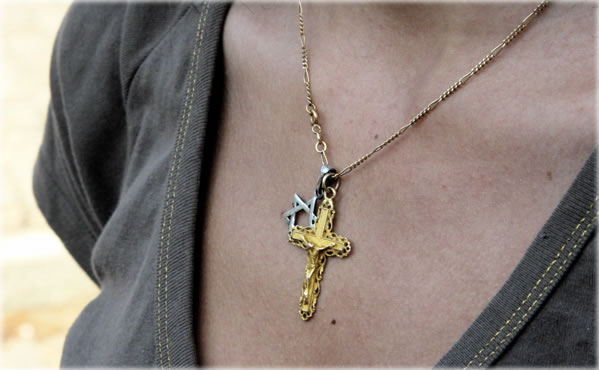
Leaving | Oct. 12, 2006
AUSCHWITZ was just part of my trip to Poland, a beautifully alive place. I think Krakow may have been the most pleasant, vital city I've ever visited in Europe. The great thing about it from my viewpoint is that you can basically talk to anyone; they are for the most part curious and friendly people.
Through much of western Europe and England I find that people look down at the ground when they walk, or they walk past you like a horse wearing blinders staring straight ahead. In Poland I saw a lot of eyes looking back at me.
What I'll remember from my trip to Auschwitz - Birkenau are the young people I met there. One thing everyone who gets to that horrendous place has in common is that they're willing to face the truth. Whether it's for curiosity or to observe the tragedy, the willingness is the same. Every day, thousands of people come there seeking the truth. It is like a temple to reality.
Two students I met there stand out in memory. One was a guy named Robert, who I met when I cozied up with the group from Norway and Sweden, and sat down on the lawn outside gas chamber/crematorium #2. Someone in the group asked about this in-ground, concrete pool of water that was standing next to the train tracks as you came into the camp.
Leonard (pictured earlier this week), who was giving the presentation, said, well, it's like this. The Nazis wanted to insure their facility, and the insurance company required them to have a little reservoir in case they needed to fight a fire.
Robert turned to me and said, "Isn't that sick? They took out an insurance policy on a death camp."
The irony was unbearable. We were sitting in front of a crematorium, where everyone wound up getting burned anyway.
"That's not Nazism," I said. "That's capitalism. But they're close cousins."
After the talk, we were milling around the memorial and I shared a little about Dick Cheney and Halliburton and its $400 million contract to build detention centers in the United States, none of which they had not heard of -- but I scribbled the references on the back of my business card, along with the word "Wikipedia." (The detention center bit I read an article about in Le New York Times, if you trust them.)
Then there was Amalia. She was part of the same group. I walked up to her and some of her friends who were standing around by the memorial, in front of the ruins of gas chamber/crematorium #3. Such a beautiful young woman with loops of long brown hair -- secretly, I swooned a little, and took a deep breath of her energy.
She was wearing a Star of David and a crucifix. Interesting image in that moment. She turned out to be Armenian, but was now living up north. I said, "Ah, the first Christian nation." Any Armenian will smile at that. Hardly anyone knows. Then I opened my mouth and said, "May I photograph that?"
"Sure," she nodded.
I took a few photos of her neckline, and thanked her. Later, we walked back toward the main gate, which was open and which we were free to walk through; and walking past old brick barracks, talked about what we experienced, and how we felt about it. That's the feeling I took from that place with me.
|
|